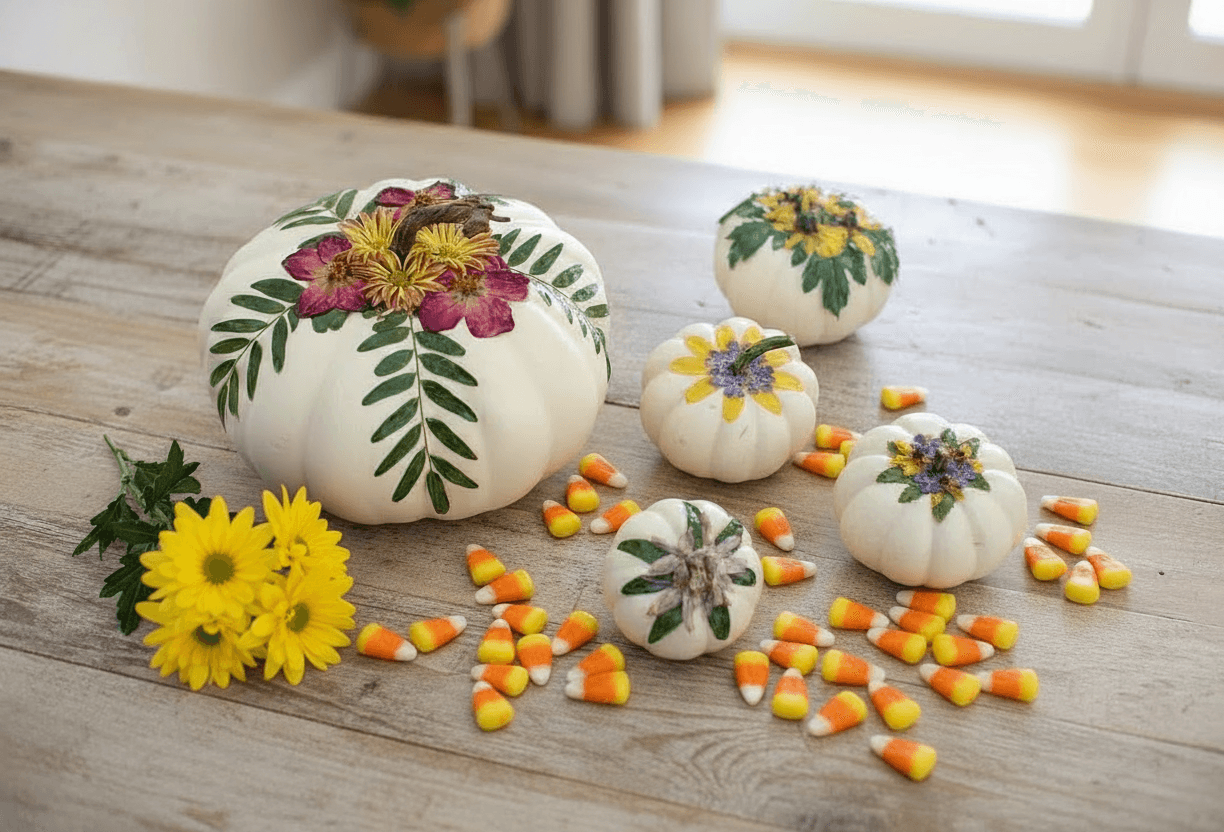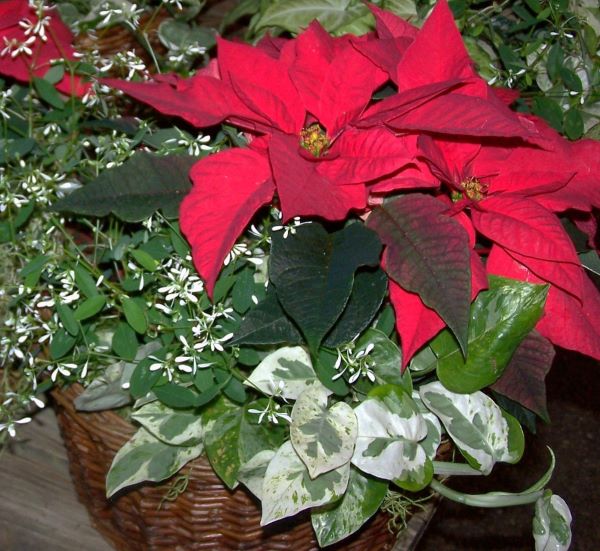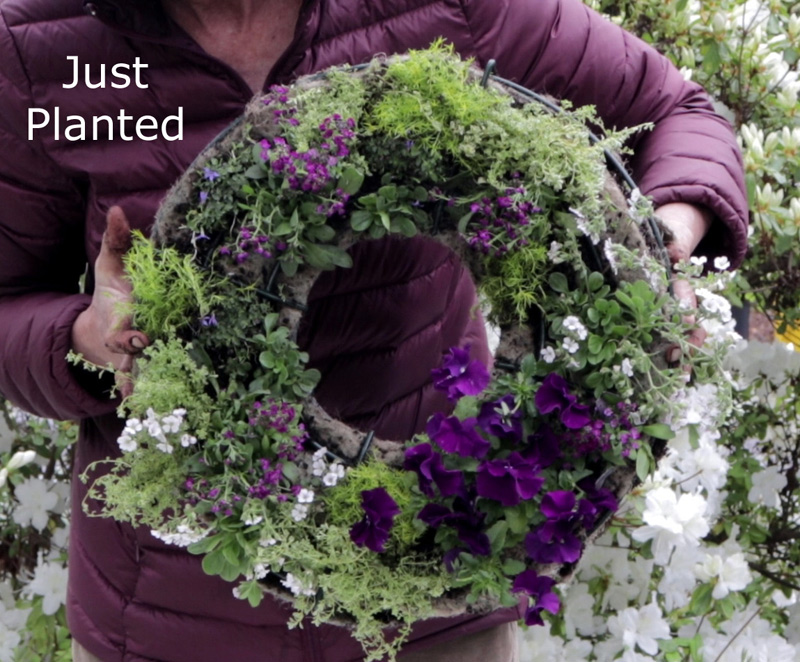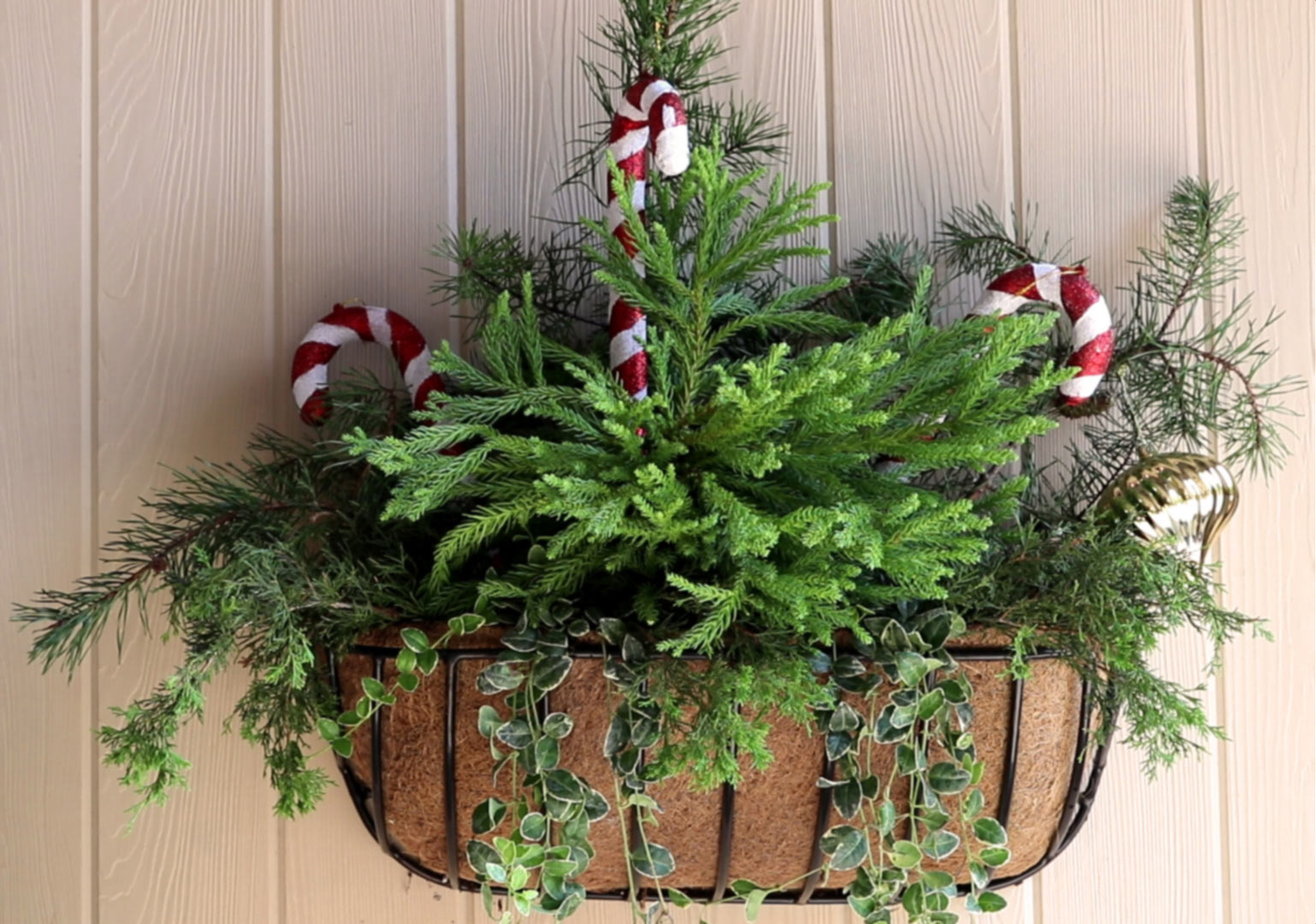
What's Your Pumpkin Vibe: Traditional, Trendy, or Funky?
And there's SO much more to choose from now compared to the dark ages when I was a kid--we had orange and....orange. There were no white pumpkins or warty blue squash in Charlie Brown's pumpkin patch. But since the turn of this century, decorators have embraced non-traditional fall color schemes that beautifully incorporate the more muted grey-blue, white, green, and soft peach tones of what were once novelty crops, turning them into autumn holiday staples. The most recent innovation to join the mainstream are the warty pumpkins, with "witchy" gnarly-knobbed versions in bold patterned green and orange favored for Halloween displays, and soft-hued heirloom varieties bearing small pebbly bumps or tan peanut-like warts that lend unique texture to designer-inspired arrangements.
So how do you choose? First, decide if you're going to carve or not, as that will affect what type you need. Second, choose your color scheme--you can keep it simple and traditional, or opt for a more "designer" look. We'll give you some tips on selection and maintenance for longer-lasting pumpkin, squash, and gourd displays, and some decorating tips to inspire your fall decorating to new heights.
Pumpkin, Squash, or Gourd--What's the Difference?
Pumpkins, squash and gourds are members of the enormously diverse Cucurbitaceae family, which contains more than 100 genera and over 700 species. They have been providing mankind with food and utilitarian objects since before recorded history. Various members of the genus Cucurbita are known as squash or gourds.
Squash are divided into two categories: tender or summer squash, and hard-skinned or winter squash, and both are edible. Examples of summer squash include zucchini, pattypan, straightneck, crookneck and other types. Winter squash are the types used for fall decorating, with thicker rinds, longer storage life, and more interesting shapes. They include small to medium hard-skinned squash such as the acorn, small hubbard, miniature pumpkin and spaghetti types, as well as the large hard-skinned types, including banana, butternuts, cheese pumpkins, cushaws, and large hubbards, among others.
Pumpkins are technically a type of squash, usually larger, rounder, and bred for cooking, carving, or decoration. They may be orange, white, blue, green, or even pink.
Gourds are primarily ornamental. Their shells are often hard, knobby, and bumpy, with bold variegation. Unlike pumpkins and squash, most gourds are not eaten but are prized for their quirky, decorative appeal and craft use.

Below: Stacking pumpkins has become a popular method of display - placing grapevine wreaths in between is both decorative and functional, helping the pumpkins to stay in place. It's a great way to fill empty planters for the season.

Tips for Longest-Lasting Pumpkins
Longevity:
- Mini pumpkins, white or orange: up to 6 months after harvest on average.
- Small winter squash: 2-3 months uncut on average
- Ornamental gourds: Can last all season fresh; dried properly, they last for years.
- Large pumpkins: 1–3 months uncut from time of harvest, but just 5–10 days once carved.
- Longevity listed in chart below is with proper storage between 50 and 60 degrees--they will not last as long in warmer and humid conditions.
If Growing Your Own:
- Harvest Timing: If you’re growing your own, pick when fully mature; stems are hard, and skin resists puncture. Underripe pumpkins rot faster.
- Curing: If homegrown, cure pumpkins in a warm (80–85°F), dry, and well-ventilated area for 7–10 days. This hardens the rind and improves shelf life, potentially doubling the storage time if kept in a cool, dry location like a root cellar.
Purchasing Tips
- Firmness: Always test the rind—press gently. It should feel hard and not yield under pressure or dent with a thumbnail.
- Stem Condition: A healthy, firm stem reduces water loss and decay. Avoid pumpkins with snapped or decaying stems. Don't lift pumpkins by the stem!
- Surface Inspection: Look for blemishes, soft spots, cuts, or mold. Even small ones reduce display life.
- Warts are usually natural, but pick pumpkins with firm, dry warts rather than soft or moldy spots for
longevity.
Care and Maintenance
- Storage: Keep pumpkins out of direct sun and away from frost; cooler, dry, ventilated areas last longest.
- Avoid direct soil contact: use straw, wood, or baskets to prevent bottom rot. Placing directly on sharp gravel (like on driveways or pathways) can nick or dent the rind, causing soft spots that lead to rot.
Wash and disinfect: A mild bleach solution (1 Tbsp per gallon of water) or a vinegar wash removes surface mold spores that shorten display life.
Seal the skin: Rubbing with vegetable oil, floor wax, or even a light coat of clear acrylic spray can help reduce moisture loss.
Indoors: Keep displays out of direct sunlight and away from heat vents. Pumpkins last longest between 50–60°F.
Carved Pumpkins: A carved jack-o’-lantern lasts only 3–7 days. Spray cut edges with bleach solution or coat with petroleum jelly to extend life by a few days. Bringing them indoors at night when temperatures dip below freezing also helps.
Uncarved pumpkins will always last far longer (weeks to months).
Culinary Use
As long as your pumpkins or squash are in good condition, there's no reason you can't cook with them after they've been displayed for a while. Carving pumpkins are edible, but not the tastiest. Pie pumpkins are smaller, about 6 to 8 inches across, with dense, less watery and stringy flesh. Note that many other pumpkins are excellent for culinary use, especially heirloom types.
Expert Tip
The hidden “field spot” trick: Pumpkins with a creamy, fully developed “field spot” (the area where the fruit rested on the soil) are usually fully mature and will last longer than ones harvested too green.
Types of Pumpkins, Squash, and Gourds for Fall Decorating
Pumpkins
Variety | Image | Features | Uses | Longevity |
|---|---|---|---|---|
Howden, Connecticut Field (shown)*, Cronus |  |
|
| 6 -12 weeks uncut |
Pie Pumpkins: Sugar Pie, Baby Pam, Winter Luxury (shown)*
|  |
|
|
|
Cinderella (Rouge Vif d'Etampes)**
|  |
|
|
|
Kakai
|  |
|
| 4-6 months uncut |
Fairytale (Musquee de Provence)**
|  |
|
|
|
Long Island Cheese**
|  |
|
| 3-6 months uncut |
Porcelain Doll
Porcelain Princess
|  |
|
|
|
Jarrahdale*
|  |
|
|
|
Triamble (Shamrock)
|  |
|
| 2-4 months uncut |
Flat White Boer*
White flat Boer Ford
|  |
|
|
|
Super Moon**
|  |
|
|
|
Galeux d'Eysines*
|  |
|
|
|
Warty Goblin**
|  |
|
|
|
Marina di Chioggia*
8 to 12 lbs. |  |
|
|
|
Squash
Variety | Image | Features | Uses | Longevity |
|---|---|---|---|---|
Autumn Acorn Blend**
|  |
|
|
|
Blue Hubbard Squash*
|  |
|
|
|
Boston Marrow Squash*
|  |
|
|
|
Speckled Hound
|  |
|
| 2-3 months uncut |
Kabocha
|  |
|
|
|
Gourds
Variety | Image | Features | Uses | Longevity |
|---|---|---|---|---|
Hoargarth Gourd**
|  |
|
|
|
Speckled Swan**
|  | Bulbous bottom with long neck and larger "head" near stem end
|
|
|
Birdhouse Gourd**
|  |
|
|
|
*Photo courtesy Baker Creek Heirloom Seed, www.rareseed.com
**Photo courtesy Ball Horticuture, www.ballhort.com
Expert tips for Great Porch Pumpkin Displays
Pumpkins, squash and gourds can compliment almost any color scheme, from bold hues to pastels to neutral tones. Naturally occurring in orange, yellow-orange, red-orange, green, gray-blue, tan, peachy-pink and white solid colors as well as variably patterned mixes, used as-is they add charm to any style porch or front door display. But if you're looking for something more dramatic, they can also be painted (we'll give you tips in the section below). Try these suggestions, allowing your inner pumpkin muse to express your own personal vibe!
Mix Shapes, Sizes & Colors
- Variety
adds richness. Combine tall oblong pumpkins, squat Cinderella types, warty Knuckleheads, and mini pumpkins. - Color layering. Use orange, white, green, blue-gray, and speckled pumpkins together for a natural, harvest-market look.
- Odd numbers rule. Group displays in 3s or 5s for balance that feels organic rather than staged.
Play with Height
- Stack pumpkins. Balance flat-bottomed pumpkins (like Fairytale or Cinderella) as the base, then smaller pumpkins on top. Placing grapevine wreaths beneath each one adds stability and a rustic, natural ambience - just be sure any sharp twigs don't puncture the rinds. Check after rain to be sure water is not collecting between pumpkins if any of the top surfaces have a concavity.
- Add props. Use straw bales, crates, wooden stools, overturned baskets, or plant stands to stagger pumpkin heights. For displays in the garden, use empty planters, stumps, or an old wheelbarrow.
- Stair-step displays. If you have porch steps, line them with a pumpkin “path”that gradually increases or decreases in size.
Blend in Natural Accents
- Tuck in corn stalks, dried grasses, or bundles of wheat for vertical interest.
- Add gourds, squash, and ornamental corn to break up uniform shapes.
- Use mums, asters, kale, or ornamental grasses in pots to soften the hard edges of pumpkins and introduce color contrast.
Try a Theme
- Farmhouse Chic: White and pale orange with a few blue-gray pumpkins, and galvanized buckets with pastel mums, asters, or white or pink kale (or wrap grower pots in burlap and tie with twine). Add straw bales for larger displays.
- Harvest Abundance: A riot of orange and warty pumpkins with straw bales, cornstalks and vibrantly hued mums.
- Modern Minimalist: A dozen uniform white pumpkins in a clean row or geometric arrangement. White, gold, and black tones are especially effective.
- Halloween Glamour and Glow: Carved white pumpkins with spooky faces, lit from within. Add gold lanterns, a few gold-painted mini pumpkins, and white kale (spray paint the grower pots gold for extra sophistication).
- Fairy lights or string lights wrapped around a pumpkin tower add a magical sparkle.
- Drilled pumpkins: Instead of carving faces, drill patterns (stars, swirls, or polka dots) so candlelight shines through elegantly.
- Add flameless candles or lanterns among the pumpkins for a luminous nighttime look
Light It Up
Mind Proportion
- A small porch looks best with fewer, more deliberate pumpkins (stacked or in small groups).
- A wide porch can handle sprawling arrangements—create two anchor groupings on either side of the door and scatter mini pumpkins in between.
Keep Pumpkins Fresh
- Choose pumpkins with intact stems and no blemishes.
- Elevate them slightly off damp ground (use trays, straw, or wood slices) to prevent rot.
- If displaying for weeks, paint or seal pumpkins with a clear acrylic spray to prolong their beauty.
Add Personal Touches
- Stencil your house number onto a pumpkin for a custom welcome.
- Layer in cozy touches like plaid blankets draped over hay bales or rustic baskets filled with gourds.
Expert Styling Tip
- Instead of scattering pumpkins randomly, create intentional clusters at visual focal points—the foot of the stairs, either side of the door, and near railings. This makes the display feel “designed” rather than “set out.”
- Make displays on either side of a door similar, but not mirror images which can look too pat.
- Rather than carving pumpkins, simply drill or punch holes with an icepick all over and add fairy lights or an LED candle inside for a stunning lantern effect.
Porch Pumpkin Displays and Outdoor Decor Ideas
Tips for Painting Pumpkins, and What Do Teal, Blue, and Purple Pumpkins Mean?
Painting pumpkins has become just as popular as carving them, especially for fall decorating, because it allows for longer-lasting displays (painted pumpkins don’t rot as quickly as carved ones) and more creative possibilities.
Note that in recent years, pumpkin colors have come to represent different things, and visitors may have certain expectations based on this:
Teal: Food-Allergies - The house offers safe options for trick-or-treaters, such as stickers, small toys, or other non-food treats.
Blue: Autism and Sensory Processing Difference Awareness - For either those visiting or inhabitants - No loud noises, bright flashing lights, strong smells. Understanding of the need for a quieter and calmer trick-or-treat experience and different communication needs.
Purple: Raising epilepsy awareness
Choose the Right Pumpkin
Look for smooth surfaces. White pumpkins like ‘Lumina’ or ‘Casper’ are ideal since the lighter background makes colors pop. Flat and smooth varieties (like ‘Flat White Boer’ or ‘Fairytale’) are easier to paint than deeply ribbed ones.
Check firmness. Choose pumpkins with no soft spots or blemishes, since paint will not adhere well to damaged areas.
Pumpkin Painting Prep
Clean thoroughly. Wash with mild soap and water to remove dirt. Wipe down with a bit of diluted vinegar or rubbing alcohol to kill bacteria and remove natural oils so paint sticks better.
Dry completely. Moisture under paint can lead to rot or peeling.
Seal first (optional but recommended). A thin coat of clear matte acrylic sealer or gesso creates a primed surface for smoother application and bolder color payoff.
Best Paints to Use
Acrylic craft paint is the go-to: it adheres well, comes in many colors, and dries quickly.
Chalk paint gives a soft, matte, vintage look that’s great for farmhouse-style decor.
Spray paint (used outdoors or in a ventilated space) provides an even base coat—perfect if you want metallic, matte black, or ombré pumpkins.
Oil-based paint pens or paint markers are excellent for fine lines, lettering, or intricate designs.
Tools & Techniques
Use foam brushes or sponges for smooth coverage without streaks.
Masking tape or painter’s tape creates crisp stripes, chevrons, or color-blocked designs.
Stencils work beautifully for patterns, lettering, or silhouettes (like bats, leaves, or stars).
Dry brushing can give a rustic or textured effect.
Splatter painting (lightly flicking a brush) adds a modern, playful look.
Creative Design Ideas
Metallics & Neutrals: Copper, gold, and bronze over white pumpkins look chic and sophisticated.
Chalkboard pumpkins: Paint with chalkboard paint so you can write seasonal messages and change them throughout the fall.
Floral or botanical designs: Paint climbing vines, flowers, or leaves to match a garden-inspired theme.
Marbling effect: Drip or swirl different paint colors together for a faux-stone look.
Kid-friendly designs: Use googly eyes, stickers, or glitter glue instead of sharp tools.
Mod-Podge can be used to decoupage pumpkins, too. You can use any decorative paper, or even pressed flowers or leaves.
Use painted pumpkins that match your home’s trim or seasonal wreath.
Finishing & Preserving
Seal the design. Once the paint is fully dry, spray with a clear acrylic sealer (matte, satin, or glossy depending on your look). This protects from smudges, scratches, and outdoor moisture.
Keep indoors or on a covered porch. Painted pumpkins last much longer when kept dry and out of direct sunlight.
Don’t refrigerate. Cold causes condensation and can make paint peel.
Painted Pumpkin Ideas
Indoor Decorating Ideas with Pumpkins, Squash, and Gourds
Groupings of small pumpkins make an attractive accent on a buffet, accent table, or down the center of a dining table.
- Set groupings on a matching table runner, colorful knitted scarf, or place them on a base of fern leaves or other attractive foliage.
- Scatter acorns among them for a rustic feel, or candy corn for a fun, extra pop of color.
- Embellish displays with vintage for jewelry added glamour, or fall leaves and pine cones for a natural. organic appeal.
- Display hand-made basket filled with small pumpkins, gourds, and ornamental corn.
- Hollowed out pumpkins can be used as "vases" for dried or cut flower arrangements. Use wet or dry floral foam as appropriate. They're also popular filled with succulents - we advise planting in a small pot that will fit inside the pumpkin so that you can save the plants without any mess once the pumpkin decomposes.























